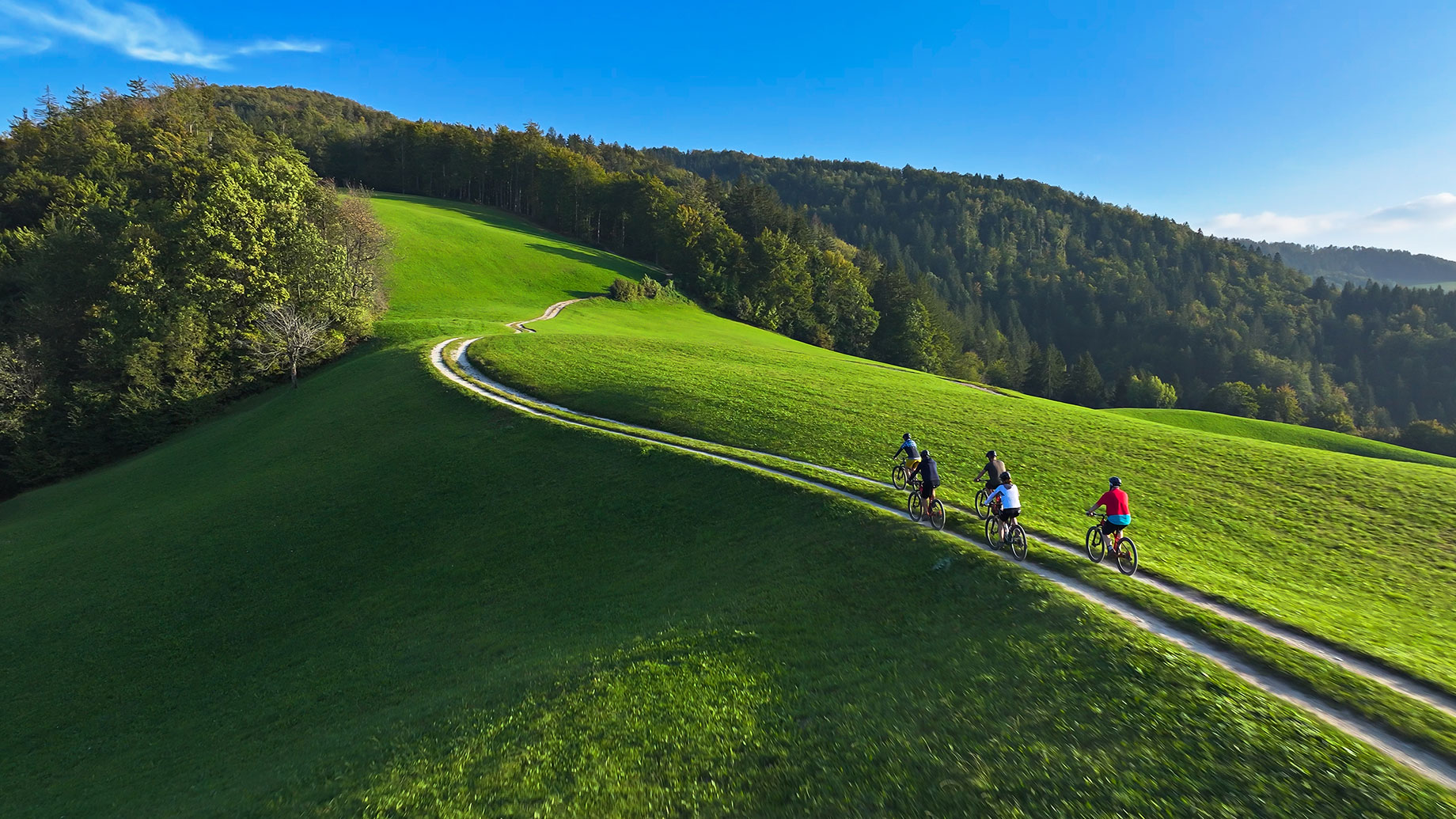
From vine-laced valleys in France and Italy to glacier-carved passes in the Alps and Adriatic-blue coastlines in the Balkans, Europe is purpose-built for cyclists. Dense networks of quiet secondary roads, centuries-old villages spaced perfectly for coffee stops, luggage-transfer services, and an ever-growing e‑bike ecosystem make point‑to‑point riding both luxurious and accessible. Whether you’re planning a week of gentle riverside cruising or chasing legendary climbs made famous by the Grand Tours, here’s how to design (or select) a cycling holiday that fits your goals, fitness, and appetite for adventure.
Why Europe is the World’s Best Cycling Playground
- Density and diversity. In a single week you can move through multiple languages, cuisines, and landscapes—mountains to Mediterranean, vineyards to medieval towns—without ever boarding a plane.
- Mature cycling infrastructure. Waymarked national networks (e.g., EuroVelo), well-paved minor roads, rail-to-trail conversions, and widespread bike-friendly accommodation make logistics straightforward.
- Service layers that remove friction. Premium tour operators, luggage transfers, GPX navigation, roadside assistance, and high-end carbon or e‑bike rentals let you travel light and ride hard (or easy) without sacrificing comfort.
- E‑bikes broaden the funnel. Mixed-ability groups can ride together; challenging routes become accessible without diluting the immersive, slow-travel experience that makes cycling special.
Guided vs. Self-Guided vs. Fully Independent
Guided
- Best for riders who want everything curated; logistics, cultural context, on-the-road support.
- Ideal for tackling high mountains, remote regions, or when you want to maximize time on the bike, not on RideWithGPS.
Self-guided (with support)
- You get pre-planned routes, hotels, luggage transfers, and a hotline—but you ride at your own pace without a guide.
- Strikes a balance between autonomy and convenience, and is often more cost-efficient.
Fully independent
- Maximum freedom (and responsibility); you design routes, hunt for accommodations, and solve problems in real time.
- Perfect for experienced travellers (or bikepackers) who relish flexibility and spontaneity.
How to Choose your Perfect European Cycling Destination
Match the region to your desired terrain, culture, and intensity:
The Alps & Dolomites (France, Italy, Switzerland, Austria)
- For: Iconic climbs (Stelvio, Alpe d’Huez), dramatic scenery, KOM dreams.
- Expect: Big elevation, switchbacks, cooler temps in summer, incredible post-ride cuisine (and Strava bragging rights).
Tuscany, Piedmont, & the Italian Lakes
- For: Rolling vineyards, strade bianche gravel options, Renaissance towns, agriturismi.
- Expect: Moderate climbs, long lunches, and routes that pair as well with Brunello as they do with beet juice.
Provence & the French Riviera
- For: Lavender fields, Mont Ventoux, coastal rides, painterly villages.
- Expect: Warm weather, accessible riding, and the option to go full-masochist on Ventoux if you want.
Girona, Mallorca & the Basque Country (Spain)
- For: Winter/spring training climates, perfectly surfaced roads, cycling-first towns.
- Expect: Buzzing cycling cafés, pro sightings, and route density for every level.
Danube Cycle Path (Germany–Austria–Slovakia–Hungary)
- For: First-timers, families, leisure riders.
- Expect: Flat to gentle gradients, picture-perfect towns, excellent signage, and riverside hotels.
Slovenia & the Julian Alps
- For: Emerald rivers, pristine roads, short distances between wildly diverse landscapes.
- Expect: Alpine passes, karst plateaus, and Mediterranean breezes inside one compact, incredibly bikeable country—a rising-star destination for Slovenia bike tours.
The Low Countries (Netherlands, Belgium)
- For: Flawless cycling infrastructure, pancake-flat routes (except in Flanders’ cobbled bergs), and bike-first urban design.
- Expect: Relaxed touring or short, punchy classics-style rides.
Scotland & Ireland
- For: Wild coasts, rugged moors, island-hopping, and moody weather that makes the post-ride pub that much better.
- Expect: Variable conditions, jaw-dropping vistas, and routes that reward layered clothing strategy.
Seasonality: When to Ride Where
- March–May: Mallorca, Girona, Andalusia, Algarve, Sicily. (Early warmth, lighter traffic.)
- June–September: Alps, Dolomites, Pyrenees, Scotland, Scandinavia. (High mountains open, long daylight.)
- September–October: Tuscany, Provence, Istria, Slovenia, Douro Valley. (Harvest season, ideal temps, golden light.)
- November–February: Canary Islands and parts of Southern Spain/Portugal for winter sun.
Fitness, Elevation & e‑Bikes: Getting the Match Right
- Rate routes by elevation gain, not just distance. A 70 km ride with 2,000 m of climbing is a different sport than a 120 km flat river path.
- E‑bikes unlock ambitious itineraries. Especially smart for mixed-ability groups or riders returning from injury.
- Know your daily ceiling. Be honest about what you can comfortably sustain for multiple consecutive days.
Accommodation Styles: Where to Lay Your Helmet
- Luxury boutique hotels & design-forward resorts: Ideal for recovery and culinary immersion.
- Agriturismi, masías, paradores: Authentic regional stays with farm-to-table food and local wine.
- Cyclist-ready properties: Secure storage, laundry turnaround, early breakfasts, sports-focused menus.
Must-Have Tech & Tools
- Navigation: GPX routes on head units (Garmin, Wahoo) with offline maps.
- Redundancy: Phone with downloaded maps, power bank, mini tool kit.
- Safety: Daytime running lights (front & rear), hi-vis elements for tunnels or mountain weather shifts.
- Data: If you’re self-guided, get a local SIM or eSIM for last-minute reroutes or mountain pass closures.
Sample Premium Tour Archetypes
- Point-to-point with luggage transfers (7–10 days): Ride from a mountain capital (e.g., Innsbruck) to a Mediterranean coast (e.g., Trieste), staying in boutique hotels each night with your bags magically appearing ahead of you.
- Basecamp luxury (5–7 days): Stay in a single premium property near a high-density route hub (Girona, Bormio, Cortina, Mallorca) and ride curated loops daily—ideal for mixed-ability groups and spa recoveries.
- Expedition-grade alpine challenge (8–12 days): Chase legendary cols across multiple countries with van support, pro-level nutrition, and ride leaders. Think Marmotte-level days stacked together with rest-day gastronomy.
Etiquette, Culture, & Sustainability
- Learn a few words of the local language. It opens doors (and sometimes cellars).
- Respect road rules and ride two abreast only where legal and safe.
- Leave-no-trace, even on tarmac. Europe’s charm is its preserved authenticity—treat it like a living museum.
- Support local. Family-run hotels, regional bike shops, independent cafés—your spend keeps cycling culture thriving.
Insurance, Paperwork, & Peace of Mind
- Travel + medical + evacuation coverage that explicitly includes cycling (and high-altitude riding, if relevant).
- Documented bike rental coverage or proof of your own bike’s value.
- IDP (International Driving Permit) not usually necessary for cyclists, but check if you plan to rent a support vehicle.
Packing Checklist (Beyond the Obvious)
- Two sets of bibs & jerseys (minimum), merino base layers for shoulder seasons.
- Lightweight packable shell (for summits or descents), arm/leg warmers, gilet.
- Daytime running lights, compact lock, spare brake pads (disc riders in mountain descents).
- Electrolytes, chamois cream, and recovery nutrition you trust (availability varies).
- Compact multi-tool with chain breaker, quick links, tubeless plugs if applicable.
Final Word: Ride Your Story
A European cycling tour is not just about where you ride, but how you stitch landscapes, meals, and local encounters into a narrative you’ll remember long after your legs have recovered. Choose a region that matches your ambition, a format that suits your independence level, and an operator or itinerary that understands your definition of luxury—be it five-star hotels, empty roads at sunrise, or a perfectly brewed espresso at the exact kilometer you needed it.
Clip in. Europe’s waiting.
